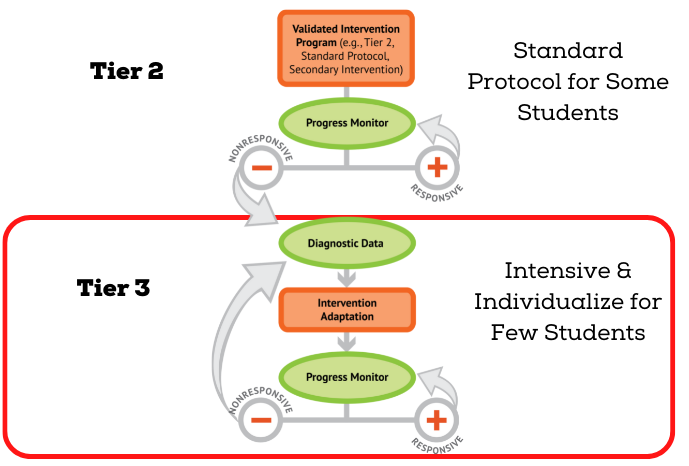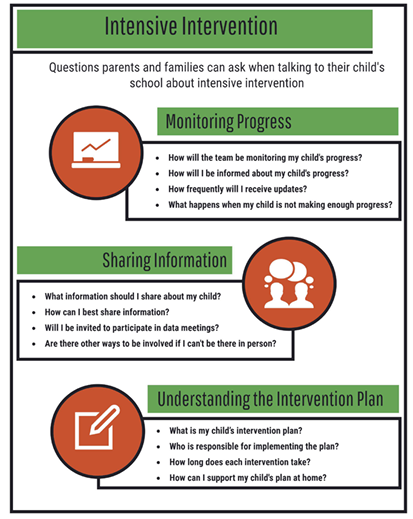What is Tier 3 PBIS?

Overview
Tier 3 interventions provide intensive, individualized support for students with significant or chronic behavioral needs. These students are identified through repeated data patterns and may require specialized strategies aligned with an FBA. Supports are frequent, personalized, and coordinated by a team including teachers, behavior specialists, and families. Tier 3 focuses on teaching replacement behaviors, modifying environments, and providing highly consistent reinforcement. Success is monitored daily to ensure meaningful progress.

How Do Students Move to Tier 3?
Movement to Tier 3 is based on documented need, not adult judgment alone. Schools typically follow these steps:
1. Data-Based Identification
A student may be considered for Tier 3 if:
-
They did not respond to Tier 2 interventions despite fidelity of implementation
-
They exhibit high-intensity or high-frequency behaviors significantly impacting their learning or others' safety
-
Office discipline referrals (ODRs), teacher reports, observations, or screening tools indicate a need for more intensive support
2. Referral to a Problem-Solving / Tier 3 Team
This team may include:
-
School psychologist
-
Counselor or social worker
-
Special education staff
-
Behavior specialists
-
Family members
3. Functional Behavioral Assessment (FBA)
The team conducts an FBA to understand why the behavior occurs (the function).
This drives the creation of the Behavior Intervention Plan (BIP).
4. Implementation of an Intensive Intervention / Behavior Intervention Plan
The team designs and implements an individualized plan that includes:
-
Preventive strategies
-
Skill-building
-
Reinforcement systems
-
Crisis/safety plans (if necessary)
5. Continuous Progress Monitoring
Progress is reviewed weekly (or more often) to adjust supports.

Core Components & Principles of Tier 3
1. Functional Behavioral Assessment (FBA)
Tier 3 always begins with an FBA.
This helps identify:
-
Triggers
-
Consequences
-
Skills deficits
-
Environmental conditions
-
The function (reason) for behavior
The FBA ensures interventions are function-based, not generic.
2. Behavior Intervention Plan (BIP)
A Tier 3 BIP is:
-
Individualized
-
Function-based
-
Skill-focused
-
Preventive rather than reactive
It includes:
-
Replacement/alternative behaviors to teach
-
Strategies to modify the environment
-
Explicit reinforcement systems
-
Communication and crisis procedures
3. Wraparound Approach
Tier 3 emphasizes:
-
Family voice and choice
-
Cultural responsiveness
-
Community and mental health partnerships
-
A holistic view of the student (school, home, social, emotional, and environmental factors)
The Wraparound model is especially effective for students with multiple or complex needs.
4. Increased Intensity & Individualization
Tier 3 provides:
-
More time, more frequent sessions, and more modeling/practice
-
Smaller adult-to-student ratios
-
Interventions delivered with higher fidelity and more specialized expertise
5. Frequent Progress Monitoring
Data is collected often (daily or weekly) to ensure:
-
The intervention is effective
-
Adjustments can be made quickly
-
Goals remain realistic and measurable
Tools often include:
-
Daily behavior reports
-
Direct observations
-
Goal-tracking charts
-
Graphs for decision-making
6. Collaborative Problem-Solving
Tier 3 requires communication between:
-
Teachers
-
Parents
-
Specialists
-
Administrators
-
The student (when appropriate)
The team continuously evaluates student progress and adjusts supports.
Create Your Own Website With Webador